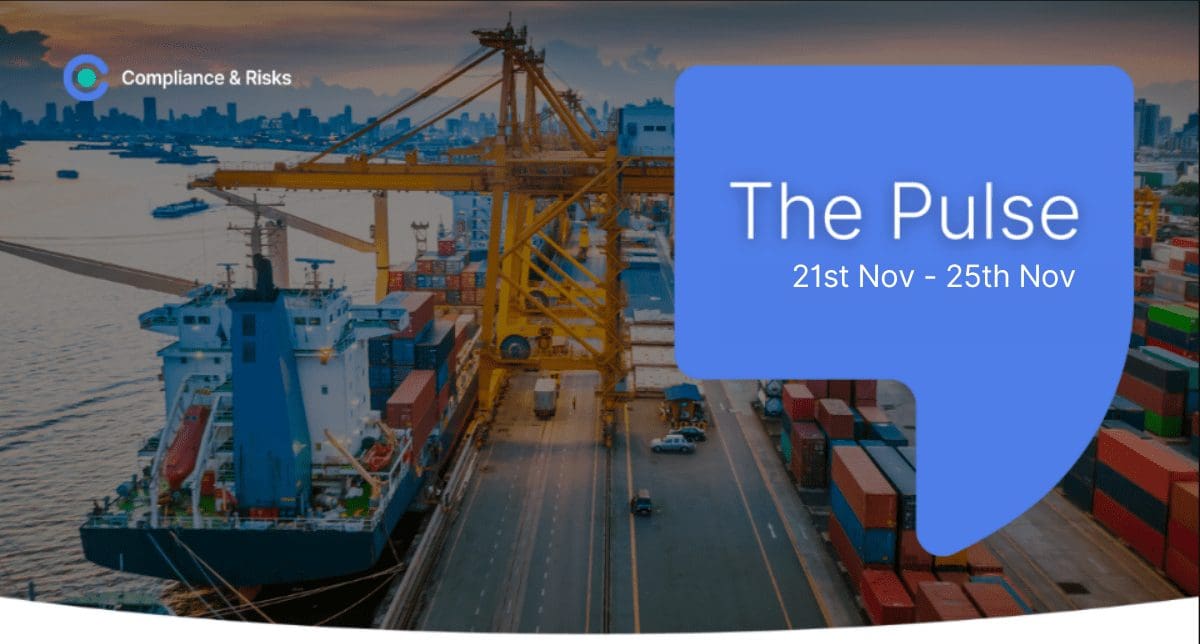
The Weekly Pulse:21st-25th November

What’s HOT in our Regulatory World at the moment
What are our clients looking at?
This week’s trending sources in C2P
- EU: Ecodesign Requirements for Professional Refrigerated Storage Cabinets, Scientific and Healthcare Refrigerated Storage Cabinets, Blast Cabinets, Condensing Units and Process Chillers, Draft Regulation, November 2022
- Croatia: Management of Packaging, Waste Packaging and Single-use Plastic Products, Draft Pravilnik, November 2022
- Italy: Environmental Labelling Obligations for Packaging, Guidelines, November 2022
What is our Content Team talking about?
Italy Confirms the Use of “Digital Channels” Meets Packaging Environmental Labelling Obligations – Freida Gubbins
On 22 November 2022, the Italian Ministry of Environment and Energy Security published the final version of the packaging labelling Guidelines in accordance with Art. 219 paragraph 5 of Legislative Decree 152/2006.
The final Guidelines have been updated to clarify that digital channels (e.g. App, QR code, website) may be used in full or partially to meet the labelling obligations. This revision has come about following the submission of comments by the EU Commission on the potential for the environmental label to go against the free movement of the goods principle, provided in the Treaty on the Functioning of the European Union (TFEU).
The Guidelines currently synopsis the obligations as follows;
- Producers must indicate the alphanumeric code provided for in Decision 97/129/EC on all packaging (primary, secondary and tertiary);
- All packaging must be labelled in the form and manner that the company considers most suitable and effective for achieving the goal, for which it is always allowed the use of digital channels (e.g. App, QR code, website) as a complete or partial alternative to the physical affixing of the labelling on packaging;
- Packaging destined for the consumer must also bear suitable inscriptions aiding its disposal;
- For plastic packaging made from polymers or polymer combinations not expressly provided for in Decision 97/129/EC, reference may be made to the UNI EN ISO 1043-1 standards for the identification of plastics not included in said Decision, and to the UNI EN ISO 10667-1 standards for the identification and recognition of recycled polymers.
Additionally, the Ministry confirmed that the labelling obligations do not apply to medication or medical devices, further information on this can be found in Italian on the Ministry’s website here.
What are our Knowledge Partners talking about?
RoHS recast delayed and MCCP no longer to be restricted by RoHS – Rina
The European Commission (EC) has been reviewing the RoHS Directive 2011/65/EU since 2021 with a plan to amend the Directive as required by Article 24. This has included a stakeholder consultation including a questionnaire, a study into possible additional substances that could be restricted, and discussions on the exemption request and renewal procedure.
Sources have provided RINA with a brief update on the EC’s plans and current intentions. RINA has heard that the EC now plans to publish proposals no sooner than the end of 2024 (previously planned for Q3 2023). This is, apparently in part a resource issue within the EC but also there are difficulties aligning RoHS with REACH. The REACH Regulation also has substance restrictions, some of which are of RoHS substances, such as lead and cadmium, so it is important that these two pieces of legislation do not conflict with each other.
One of the substances that was proposed for restriction by RoHS was medium chain chlorinated paraffins (MCCP). The EC has now decided that this should not be restricted by RoHS because a REACH restriction is already at an advanced stage and so a RoHS ban is unnecessary. However, RoHS restriction for Tetrabromo bisphoneol A (TBBPA is still likely to be adopted in Q3/Q4 2023 (from Q4 2022). TBBPA is used in only small amounts additively in electrical equipment with most being used as a reactive flame retardant so that only traces remain in finished products.
Exemptions are an on-going issue for the EC due to the large number of them being requested for renewal and the technical complexity of most of them.
Exemptions are currently assessed by consultants who make recommendations and then usually, the EC adopt those recommendations, although sometimes changes have been made.
The process is lengthy and manufacturers are sometimes unhappy with the outcome. RINA has learned that the EC is considering asking ECHA to carry out RoHS exemption request assessment with plans to increase ECHA’s funding to do this work.
ECHA has many chemical experts but no expertise in electronics and so it seems likely that they (or the EC) will still need to employ consultants who, ideally, will have some suitable technical knowledge so that the requests can be properly assessed.
In practice, it may be that the only difference is that ECHA manage the exemptions process instead of the EC and ECHA appoint the consultants who assess the exemptions.
The EC will still need to decide whether to accept the recommendation from ECHA and carry out the legal procedures to adopt Commission Decisions.
On a separate exemption issue, RINA was informed that Commission proposals for Pack 22 of exemption renewals has been delayed due to staffing issues and the EC could not give a date when their proposals would be published.
Pack 22 includes 6a, 6b, 6c, 7a, 7cI and 7cII for which the Oeko Institut published its final report in December 2021.
Finally, by delaying the date for RoHS recast proposals, it is possible that the Commission may find time to update the RoHS FAQ guidance.
What are our clients asking about?
“On the EU commission website, I read that the commission is currently assessing options to review the Packaging and Packaging Waste Directive.
Do you have any information on that? Is a draft is already available?”
Answer by Freida Gubbins
The EU Commission is currently in the process of recasting the Packaging and Packaging Waste Directive, a draft version was meant to be released earlier this year, however its publication has been repeatedly delayed. There is speculation that it will be released on 30 November.
Despite the above a working version of the proposal has been made available to a select group of stakeholders (it is not publicly available). Currently, this is what we know so far about its contents based on leaked information;
- an obligation to recycle 50 percent of plastics and aluminium by 2025
- mandatory deposit systems for single-use containers
- overall recycling target for 2025 of 65 percent of all packaging by weight, with individual minimums by category
- targets for minimum recycled content
- all packaging placed on the market from 2030 must be recyclable
- from 2030 each packaging unit will have to be reduced to its minimum size in terms of weight, volume and packaging layers
- packaging will need to be labeled with information on composition and reusability
- an obligation for member states to “reduce packaging waste generated per capita” by 5 percent by 2030 etc
- the consumption of ordinary lightweight plastic bags (shopping bags) should be limited to 40 per person per year after 2025
- member states must establish Deposit Return Schemes (DRS) for single-use plastic bottles and single-use metal containers
Stay Updated On Global Regulations With The Weekly Pulse
This information is based on the most viewed regulations on C2P this month.
Sign up to get the latest compliance news delivered to your inbox weekly, for free!
The Pulse – Weekly Newsletter
Get the latest compliance news delivered straight to your inbox








